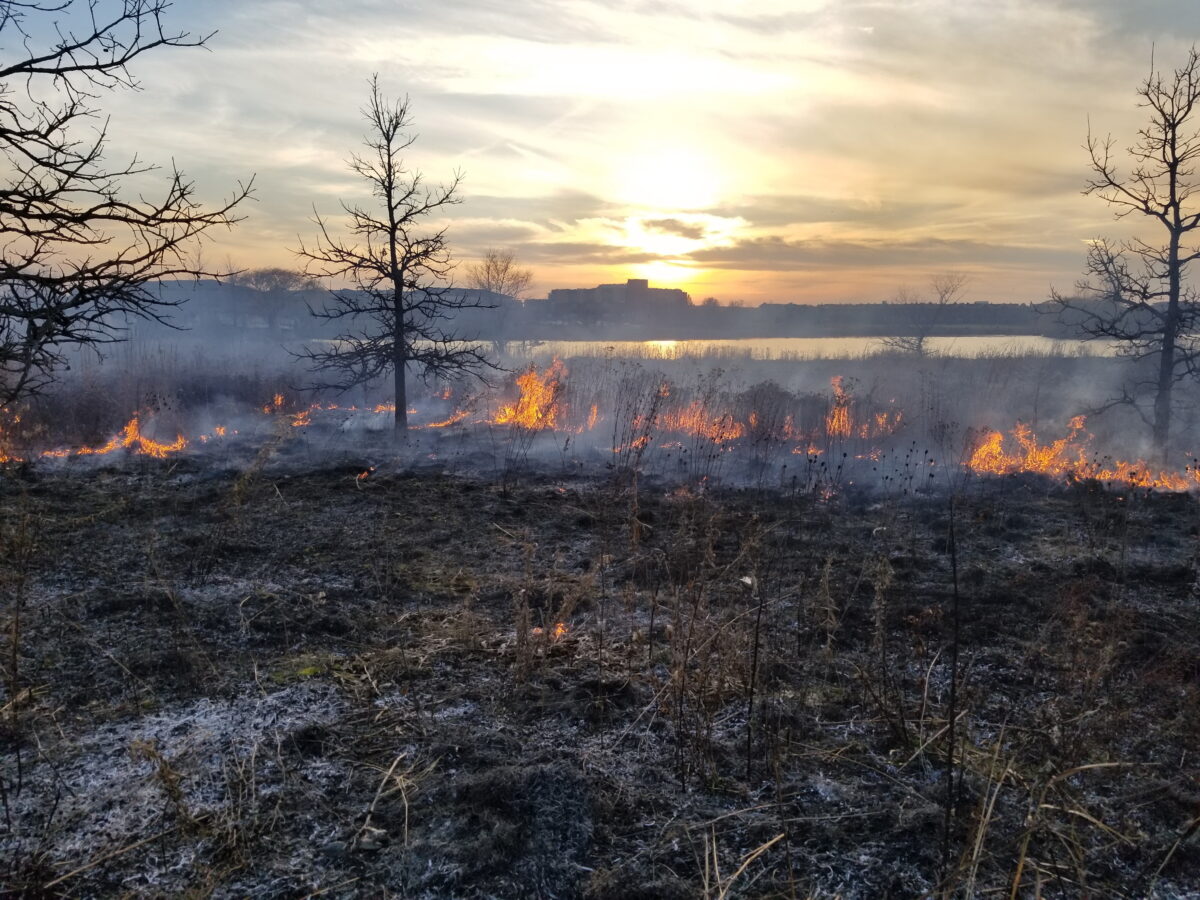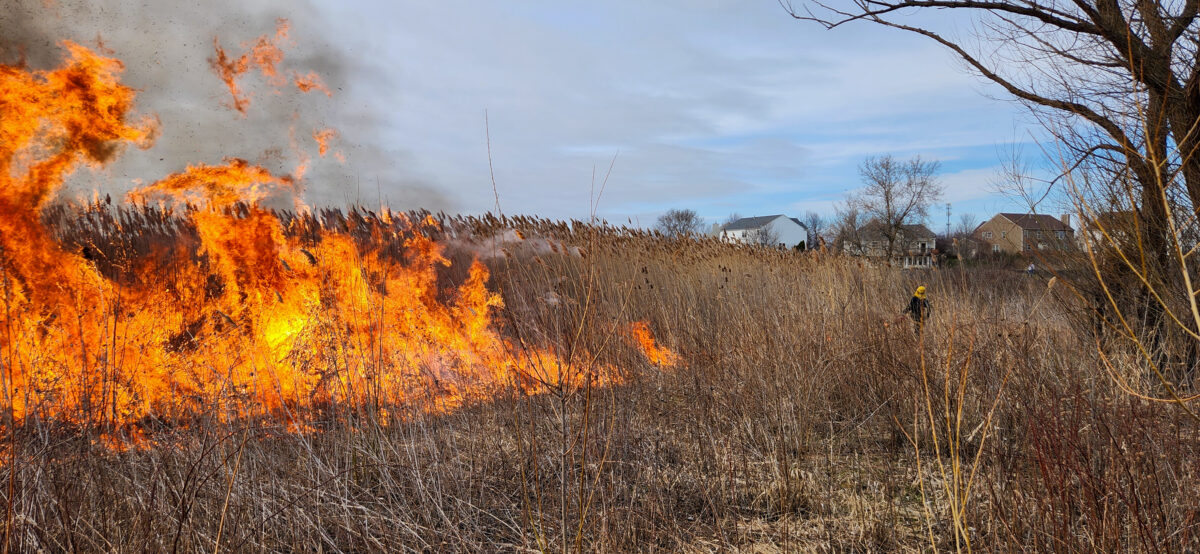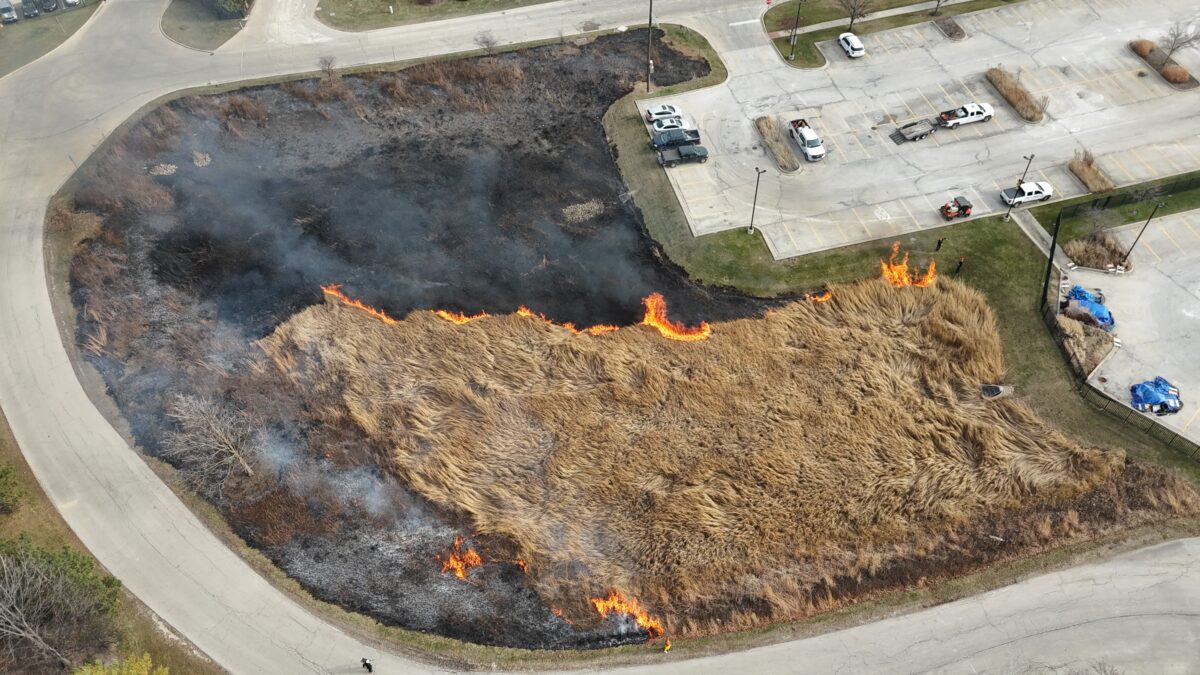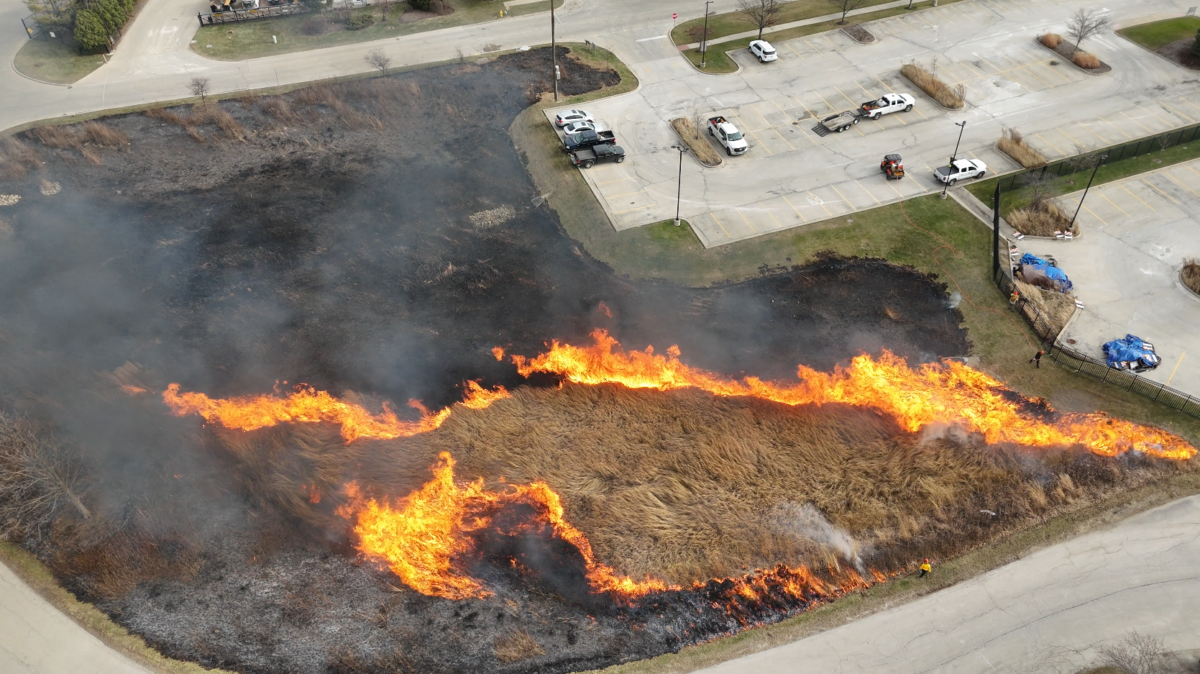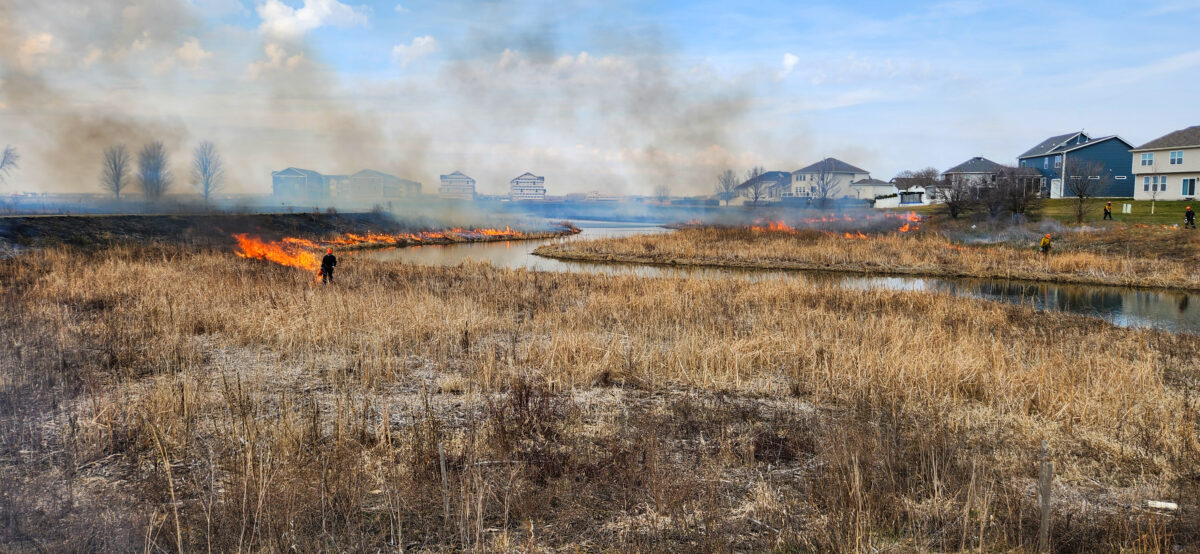
Mark Micek
Tallgrass Restoration, Project Manager/Burn Boss
Is your natural area looking a bit ragged? Is it possibly not as full or colorful as it was a season or two ago? While there may be several reasons for an aesthetic change in your natural area, one remedy may involve prescribed burning or performing a dormant season mow. There are several benefits to burning a natural area and if it’s something permitted in your area, you may be surprised by how it can change your landscape.
Is Burning an Option For You?
Before you consider a burn, you should verify that it’s permissible and can be done safely on your property. Areas close to structures, and ornamental landscaping are often not an option for burning as the heat can easily cause damage to siding, stucco, wood, and evergreens.
If burning is not a good option for you, instead, you may want to consider mowing the area in the spring and then raking and removing as much of the thatch as possible. This will simulate a controlled burn and provide some of the same benefits. Note that it’s often best to mow back your natural areas in the late spring once the insects have broken dormancy and can more easily move out of the area to safety.
If you’re interested in learning more about burning your property, give us a call! Tallgrass Restoration employees are trained and certified to complete burns safely and effectively. While many aspects of ecological restoration can be done by the average landowner, prescribed burning is something that should be left to the experts.
How Often Should Burns be Done?
Prescribed burning is a beneficial practice that can occur approximately every three to five years. Some people prefer to burn more often which can help control unwanted woody growth on a site, but it can also reduce species diversity if it occurs too frequently. The answer of how often to burn is usually determined by the management goals of the site and the available working budget.
Spring or Fall, Which is Best?
The season in which you burn may be important depending on the type of area you are working with. Woodlands may be burned in the fall if they have enough leaf litter and conditions dry out enough, or they can be burned in the early spring before the woodland ephemerals begin to emerge. Wetlands can either burn well in the fall or in the early spring before the reptiles and amphibians start to become active. Prairie habitats can be burned any time after the vegetation has died back sufficiently and before the snakes and other critters come out of hibernation.
Many people have stated that fall burning favors flowers but in our experience, this isn’t always true. Fall can be a tricky season to burn in due to late fall frosts, frequent rains, and below freezing temperatures, so often you may be getting a spring burn anyway.
One factor to consider is if you want to leave the vegetation on your site over the winter to serve as erosion control prevention, or habitat for birds, small mammals, and dormant insects.
What to Expect Once You Proceed.
Once you have the logistics sorted out with contractors, permits, notifications, and conditions, you can proceed with the burn. Often burned areas are able to green-up quicker than unburned areas because the black soil will more readily absorb the sun and heat the ground up quicker. With the old thatch having been consumed in the fire and converted back into ash and nutrients, the new fertilized growth will have more room to spread out and will often produce more flowers per plant.
Some species are even stimulated by the burning process, so you may get to see a few plants that you hadn’t noticed in the previous years. You may also notice a decline in some less aggressive weeds, but be aware, more aggressive weeds such as thistles and sweet clover are not controlled by burning and will still need to be managed in other ways. Therefore, while burning is a great tool for landscape management, it should not be the only tool in your toolbox.

